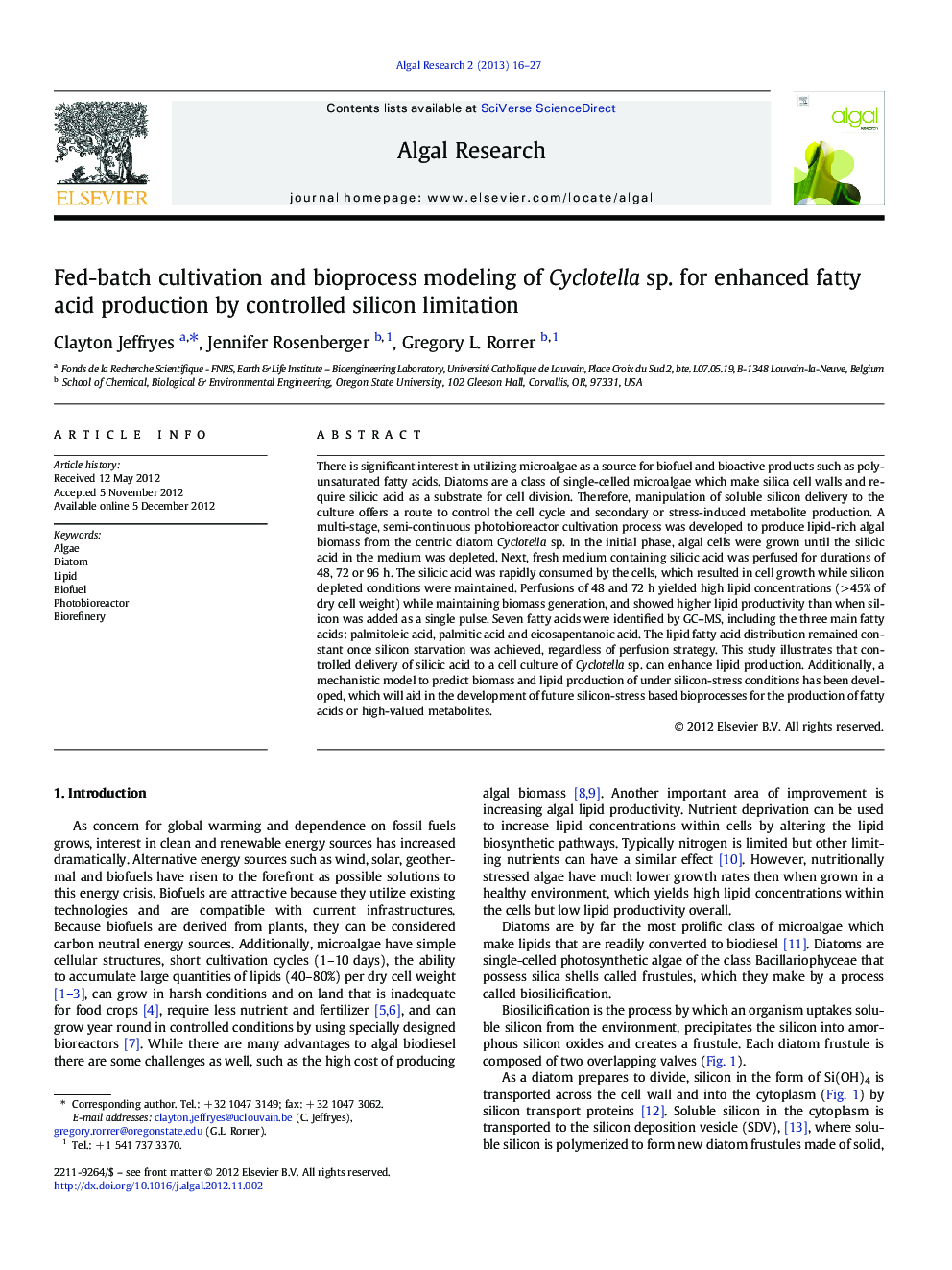| Article ID | Journal | Published Year | Pages | File Type |
|---|---|---|---|---|
| 1742112 | Algal Research | 2013 | 12 Pages |
There is significant interest in utilizing microalgae as a source for biofuel and bioactive products such as polyunsaturated fatty acids. Diatoms are a class of single-celled microalgae which make silica cell walls and require silicic acid as a substrate for cell division. Therefore, manipulation of soluble silicon delivery to the culture offers a route to control the cell cycle and secondary or stress-induced metabolite production. A multi-stage, semi-continuous photobioreactor cultivation process was developed to produce lipid-rich algal biomass from the centric diatom Cyclotella sp. In the initial phase, algal cells were grown until the silicic acid in the medium was depleted. Next, fresh medium containing silicic acid was perfused for durations of 48, 72 or 96 h. The silicic acid was rapidly consumed by the cells, which resulted in cell growth while silicon depleted conditions were maintained. Perfusions of 48 and 72 h yielded high lipid concentrations (> 45% of dry cell weight) while maintaining biomass generation, and showed higher lipid productivity than when silicon was added as a single pulse. Seven fatty acids were identified by GC–MS, including the three main fatty acids: palmitoleic acid, palmitic acid and eicosapentanoic acid. The lipid fatty acid distribution remained constant once silicon starvation was achieved, regardless of perfusion strategy. This study illustrates that controlled delivery of silicic acid to a cell culture of Cyclotella sp. can enhance lipid production. Additionally, a mechanistic model to predict biomass and lipid production of under silicon-stress conditions has been developed, which will aid in the development of future silicon-stress based bioprocesses for the production of fatty acids or high-valued metabolites.
